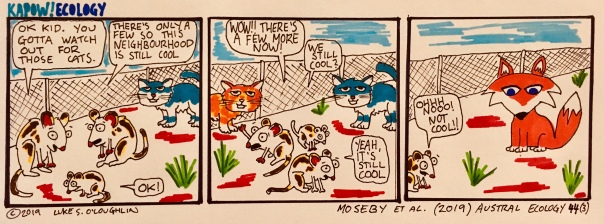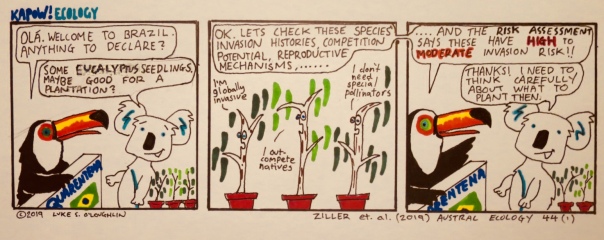
Effective control of an invasive species is frequently used to infer positive outcomes for the broader ecosystem. In many situations, whether the removal of an invasive plant is of net benefit to biodiversity is poorly assessed. We undertook a 10-year study on the effects of invasive shrub management (bitou bush, Chrysanthemoides monilifera ssp. rotundata) on native flora and fauna in a eucalypt forest in south-eastern Australia. Bitou bush eradication is a management priority, yet the optimal control regime (combination of herbicide spray and fire) is difficult to implement, meaning managed sites have complex management histories that vary in effectiveness of control. Here we test the long-term response of common biodiversity indicators (species richness, abundance and diversity of native plants, birds, herpetofauna and small mammals) to both the management, and the post-management status of bitou bush (% cover). While average bitou bush cover decreased with management, bitou bush consistently occurred at around half of our managed sites despite control efforts. The relationship between biodiversity and bitou bush cover following management differed from positive, neutral or negative among species groups and indicators. Native plant cover was lower under higher levels of bitou bush cover, but the abundance of birds and small mammals were positively related to bitou bush cover. Evidence suggests that the successful control of an invader may not necessarily result in beneficial outcomes for all components of biodiversity.
For the actual science of this story, you should definitely read the paper and contact the authors if you have any questions.









